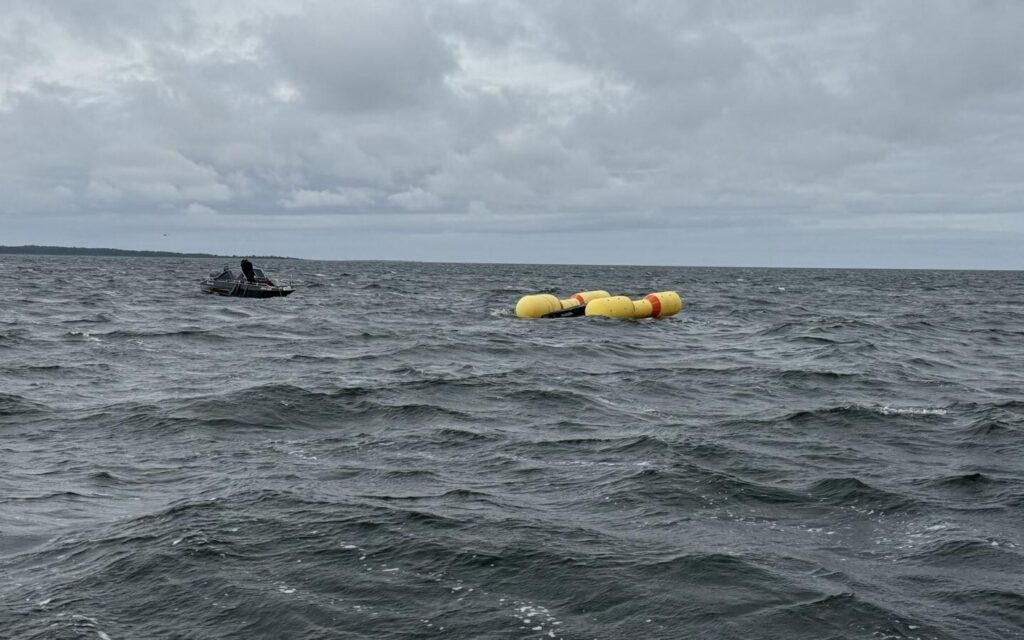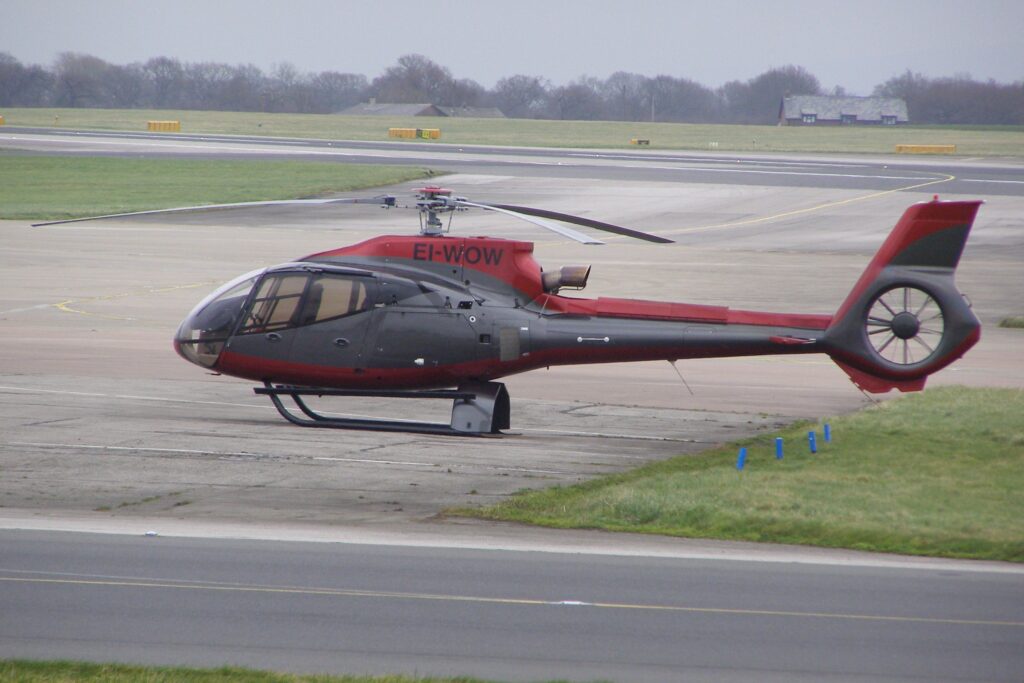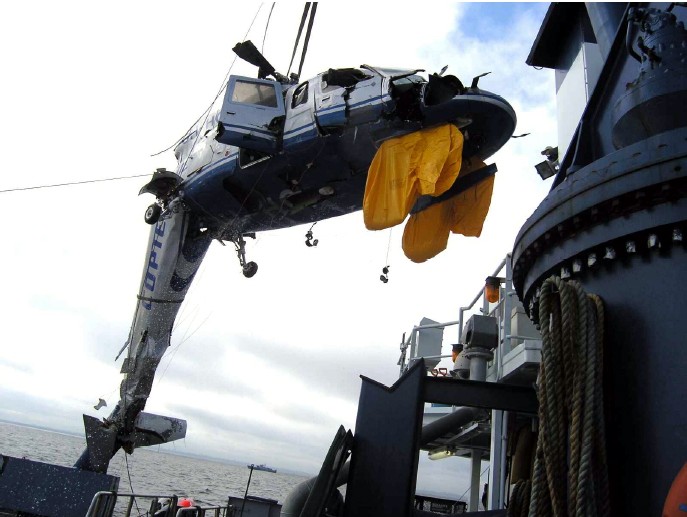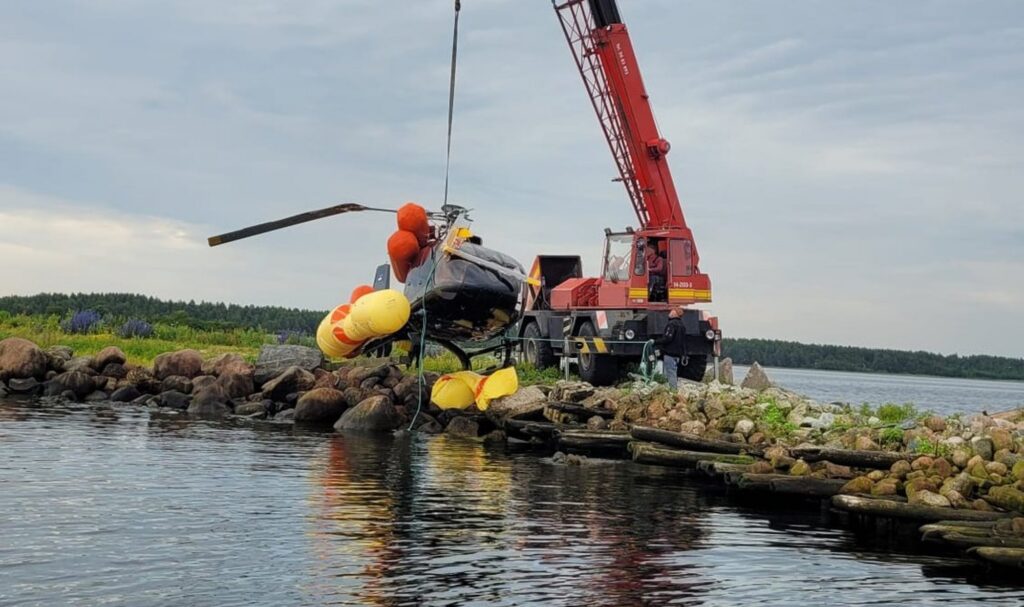In what officials are describing as a “fortunate accident”, all seven people aboard a helicopter that plunged into the Baltic Sea off Estonia’s western coast on Sunday morning survived unscathed.
Among them was Estonian entrepreneur Väino Kaldoja, who has now confirmed he was travelling as a passenger alongside family members during the crash.
The Airbus H130, a single-engine light helicopter registered in Estonia and owned by Silberauto, crashed into the sea between the islands of Väike-Vilsandi and Saaremaa shortly after departing at 11:06AM. According to Flightradar24, it disappeared from radar just two minutes later. An emergency call was received at 11:15AM, prompting a swift rescue operation.
The Estonian Police and Border Guard Board reported that the helicopter, flying at around 500 feet, had likely entered low cloud before losing altitude and performing an emergency landing on water. Though the aircraft capsized, it remained buoyant thanks to flotation devices that deployed automatically beneath its doors.
In a written response to Eesti Ekspress, an Estonian weekly, Kaldoja said that two experienced pilots were aboard, one of whom also serves as a flight instructor. “We were in Vilsandi with friends, attending a close relative’s wedding. The takeoff was routine, and the weather was also normal,” Kaldoja noted.
But shortly after reaching 150 metres, the helicopter began to lose height. “The pilots’ decisive action saved us from the worst,” he said. “The impact felt like a slightly rougher landing than usual. Escaping from an upside-down helicopter underwater is no easy task.”

Despite the challenging circumstances, all five adults and two minors aboard managed to exit the helicopter and climb atop the fuselage while awaiting rescue. Vilsandi’s volunteer maritime rescuers reached the site within 20 minutes and brought the group to Vikati harbour. Locals greeted them with blankets; medics confirmed none required hospital treatment.
Kaldoja, who could not speak by phone the next day because his device’s speaker had been damaged by water, described how the emergency calls were first placed at 11:11AM and 11:12AM using waterproof phones, relaying coordinates to friends familiar with the area who then contacted authorities. “The entire rescue process went without panic,” he said. “We supported one another, even as the cold began to affect us. The greatest danger was hypothermia.”

The helicopter was equipped with special pontoons designed for over-water flights, which Kaldoja said “proved essential” in this situation. “This shows once again that elements which may seem to add only weight can become critical, even with the best pilots and aircraft.”
Helicopter raised, investigation underway
On Monday morning, 7 July, recovery teams began the process of lifting the downed helicopter from the water. Divers removed loose debris, and inflatable pontoons were attached to raise the aircraft, which was then towed to harbour and lifted onto a trailer by crane.
The vehicle was transported to the Police and Border Guard’s Air Patrol Unit hangar in Kuressaare. Estonia’s Safety Investigation Centre has launched a full investigation into the incident, including analysis of any available flight data recorders. The final report is expected within six months.
Kaldoja confirmed the family’s full cooperation: “Unfortunately, I have no right to speculate. The investigation is in the hands of professionals.”
A modern airframe with strong safety credentials
The Airbus Helicopters H130 (formerly EC130) is a widely used light utility aircraft designed for both private and commercial operations, from sightseeing to emergency medical services. Its design includes a shrouded Fenestron tail rotor, offering improved safety, noise reduction, and stability in low-speed flight. With its large cabin, high visibility, and low vibration levels, the H130 has gained popularity among operators worldwide.

Despite its reputation as a safe aircraft, the H130, like all rotorcraft, operates within a margin of risk greater than that of fixed-wing aviation. Globally, helicopter accident rates remain significantly higher than those of commercial airliners.
The International Helicopter Safety Foundation reported a 2023 accident rate of 1.09 per 100,000 flight hours, with a fatal accident rate of 0.47. While these figures represent a decline from previous years, they underscore the inherent complexity of rotorcraft operations.
Last major crash in Estonia 20 years ago
In Estonia, helicopter incidents are extremely rare. The most devastating remains the Copterline crash of 2005, when a Sikorsky S-76C+ helicopter operating on the Tallinn–Helsinki route plunged into Tallinn Bay just three minutes after takeoff. All 14 people on board were killed. The accident, which occurred between the islands of Naissaar and Aegna, led to a major international investigation.
While the initial report failed to identify an immediate cause, subsequent analysis uncovered a critical manufacturing flaw: peeling of a plasma-coated surface inside the fore hydraulic servo. Detached metal fragments had obstructed a valve, causing an abrupt change in rotor blade pitch and leaving the pilots with no chance to regain control during the 35-second descent.

The crash cast a long shadow over commercial helicopter transport in the region and prompted improvements in rotorcraft maintenance oversight and manufacturing standards.
More recently, in May 2025, Estonia was again shaken by helicopter tragedy when two civilian helicopters that had taken off from Tallinn collided mid-air near Eura in Western Finland, killing all five people on board. Among the victims were Estonian businessmen Priit Jaagant, chair of construction firm Mapri, and Oleg Sõnajalg, a well-known wind energy entrepreneur.

The helicopters – both Robinson R44s – had maintained parallel flight paths until their fatal collision at 300 metres altitude. The crash remains under investigation by Finnish authorities.
Sunday’s incident, by contrast, ended in relief. “Everyone is alive,” said island warden Avo Piisk. “That’s what matters most.”

